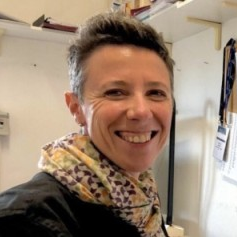Finding the Right Way to Prepare Enantiopure Compounds: A Focus on Biologically Active Compounds. A Themed Honorary Issue to Prof. Richard M. Kellogg
A special issue of Molecules (ISSN 1420-3049). This special issue belongs to the section "Organic Chemistry".
Deadline for manuscript submissions: closed (15 September 2021) | Viewed by 4829
Special Issue Editors
Interests: rational drug design, synthesis and structure–activity relationships of biologically active compounds (small molecules and peptides); preparation and characterization of chiral compounds; discovery of new modulators of sigma receptors as well as of small molecules able to affect the protein kinase C (PKC)/ELAV proteins/mRNA system
Special Issues, Collections and Topics in MDPI journals
Interests: design, synthesis, and characterization of biologically active compounds; structure–activity relationship studies including the role of chirality in the biological activity, with a particular focus on sigma receptor modulators and compounds targeting the protein kinase C (PKC)/ELAV proteins/mRNA system
Special Issues, Collections and Topics in MDPI journals
Special Issue Information
Dear Colleagues,
We had the great pleasure of meeting Prof. Richard M. Kellogg about 20 years ago, during a meeting on chiral drugs. After his exciting lecture, we had a scientific conversation. Since then, we have always been in contact, and on several occasions we have taken advantage of his expertise and suggestions concerning the preparation of biologically active compounds in enantiopure forms.
Prof. Richard M. Kellogg was born and educated in the United States. After his Ph.D. at the University of Kansas, he moved to the Netherlands as a postdoctoral fellow and has remained there since. He was professor of organic chemistry at the University of Groningen from 1975 to 2002, where he and his group published works focusing on photochemistry, reactive intermediates, and bio-organic chemistry. More recently, he has worked on chirality, in particular on deracemization methods.
This honorary issue focuses on recent successes in the preparation of biologically active molecules in homochiral forms (deracemization methodologies, fractional crystallization, enantioselective HPLC) and on the assignment of absolute configuration.
Prof. Dr. Simona Collina
Dr. Daniela Rossi
Guest Editors
Manuscript Submission Information
Manuscripts should be submitted online at www.mdpi.com by registering and logging in to this website. Once you are registered, click here to go to the submission form. Manuscripts can be submitted until the deadline. All submissions that pass pre-check are peer-reviewed. Accepted papers will be published continuously in the journal (as soon as accepted) and will be listed together on the special issue website. Research articles, review articles as well as short communications are invited. For planned papers, a title and short abstract (about 100 words) can be sent to the Editorial Office for announcement on this website.
Submitted manuscripts should not have been published previously, nor be under consideration for publication elsewhere (except conference proceedings papers). All manuscripts are thoroughly refereed through a single-blind peer-review process. A guide for authors and other relevant information for submission of manuscripts is available on the Instructions for Authors page. Molecules is an international peer-reviewed open access semimonthly journal published by MDPI.
Please visit the Instructions for Authors page before submitting a manuscript. The Article Processing Charge (APC) for publication in this open access journal is 2700 CHF (Swiss Francs). Submitted papers should be well formatted and use good English. Authors may use MDPI's English editing service prior to publication or during author revisions.
Keywords
- Deracemization methodologies
- Fractional crystallization
- Enantioselective HPLC
- Absolute configuration







